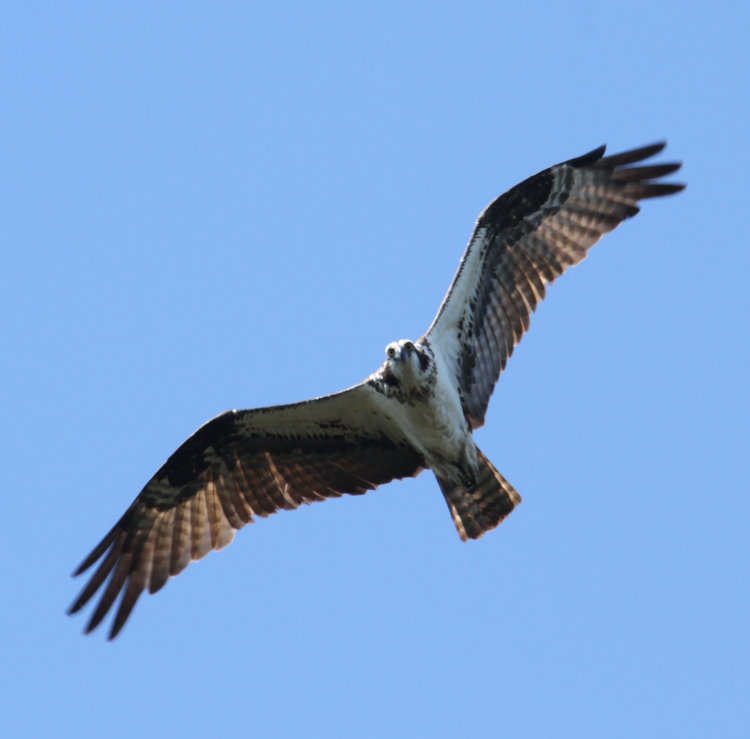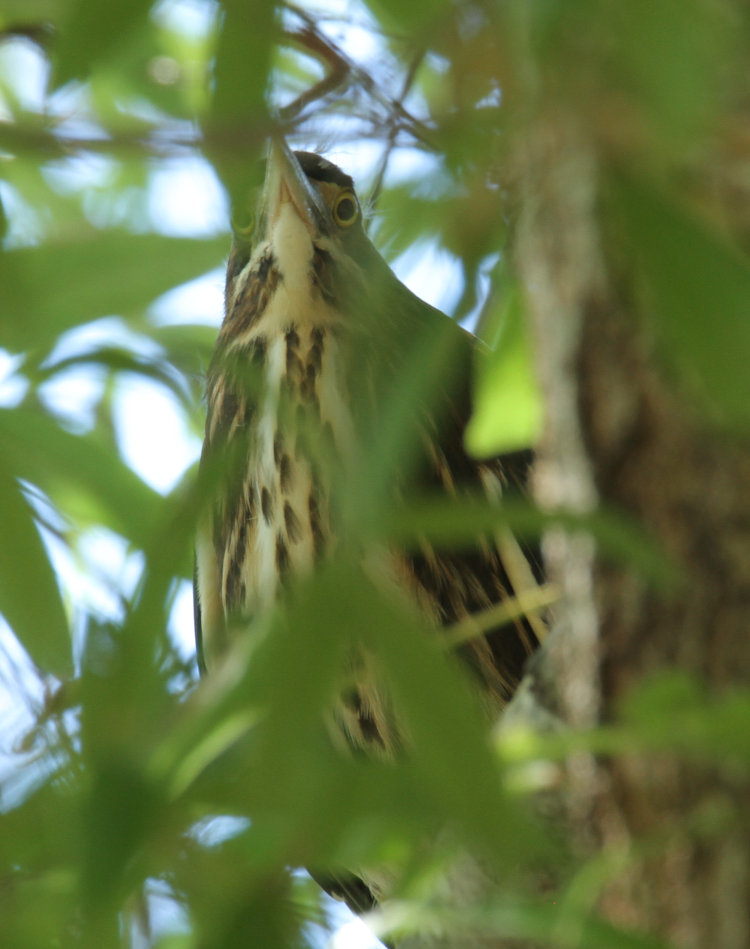Or at least, a lot cooler than it has been for the past month.
Sunday finally brought some rain – not a lot, but enough to make some of the wilted plants look happier – and it also brought a brief drop in the overall temperatures, enough that last night we actually had the windows open, being cooler outside than in the house with the AC on. This morning, not facing the idea of overwhelming heat like I had been all through June, I ventured out to the neighborhood pond to see what was happening.

I know we have no osprey living in the immediate area, but that doesn’t mean we don’t get singular visits from time to time, and they always have the pond to themselves. This one circled around for a bit, dipping once to get a closer look at something that wasn’t enough to provoke a predatory stoop, and I fired off a bunch of frames hoping for something a little more than “osprey in the sky,” but that’s what I got anyway.
Though under a tree canopy nearby, a pair of sizable fish were remaining safely out of sight, which was good because they were too shallow to escape.

Actually, this one might have been safe just from its size, since there’s a very good chance that it was too large for an osprey to lift from the water – the visible tailfin here was perhaps over 15cm in width as the fish foraged in the shallows. I did my part by flushing it from the shadows and into sunlit water, but the osprey didn’t respond. You try to help a guy out…
We’ll go slightly out of order here, just to feature this one, sunning itself on a log while others around it had already plunged into the water at my approach.

I’m going to tentatively identify this as a yellow-bellied slider (Trachemys scripta scripta,) based on the shape of the carapace and that’s what the pond is full of, but I’ve never seen one completely without markings. Does this make this an old specimen? Possibly – it certainly wasn’t lacking in size, but the mud on the carapace didn’t help matters any.
However, what I was really after was something that I spotted early yesterday morning, when the sky was still overcast from the rain and the light thus crappy. It was much better today, and allowed for a handful of useful frames of my target.

That’s a green heron (Butorides virescens,) and a newly-fledged one at that, hanging out in the same tree where I photographed (and videoed) the newly-fledged pair a couple of years ago. This is encouraging, because overzealous homeowners around the pond cut out the healthy tree that had previously housed the green heron nests for many years – I don’t know what’s going through their heads, but it has nothing to do with conservation or responsibility. So at least the herons have chosen this tree instead, to all appearances anyway, since I’ve never spotted the nest myself. This one was endeavoring to remain out of sight while I crept closer, maneuvering to new locations and keeping a careful eye on me.

For my part, I was slinking around trying for a nice clear shot, while the heron did its best to prevent it. I have other frames where the eyes are less-obscured, but liked this one for the appearance of that left eye – or is it the right?
If you look very close, you can just make out a little tuft of baby down feathers atop the head, but we can do better than that too.

I’m now certain there are a pair of them, not half as reluctant to fly as the ones that I watched two years ago; this one popped up from the shoreline with a brief alarm call and flew to a nearby tree, giving me a bit better light and perspective. Now the down feathers are obvious, but you can also see the lean physique and the muted colors, even though in size, this is only marginally smaller than a full adult; most birds reach near adult size before they leave the nest. I’m a little sorry that I wasn’t trying to track their growth, but since I’ve never found the nest, this might have been hard, and given the heat index for all of the days I would have been trying, it’s probably better this way. See? Professionals can justify their failures as intended all along…




















































